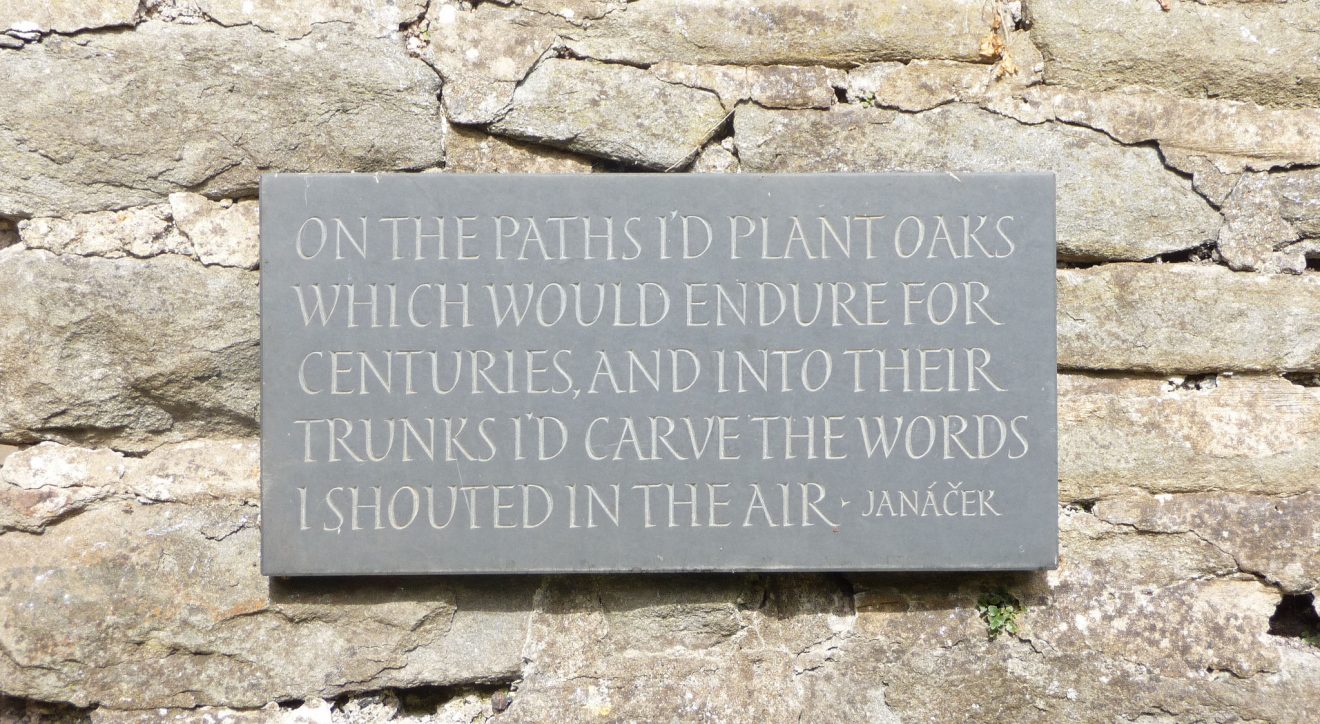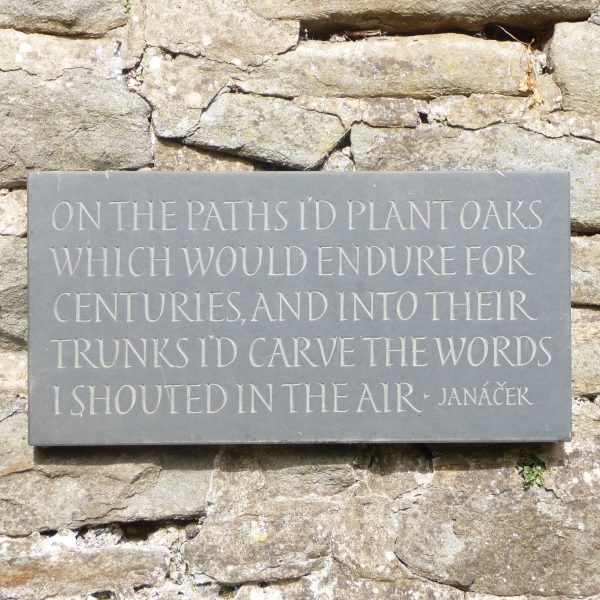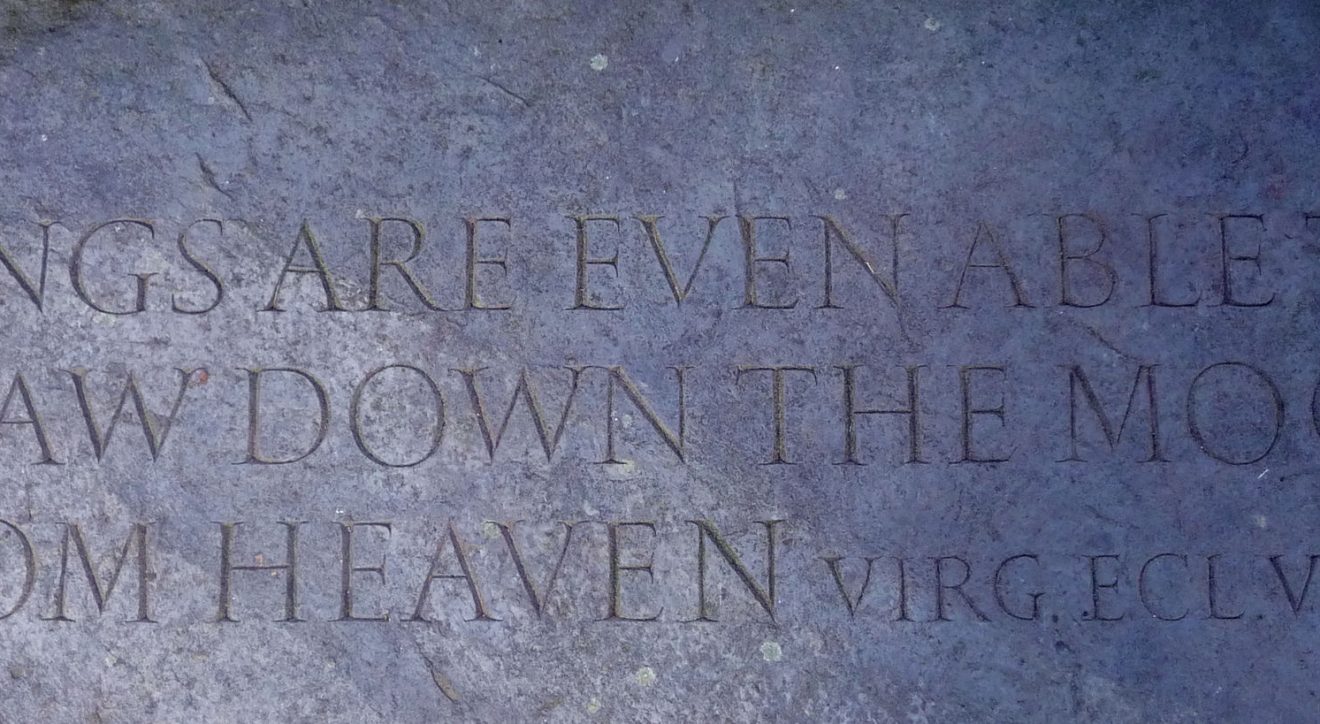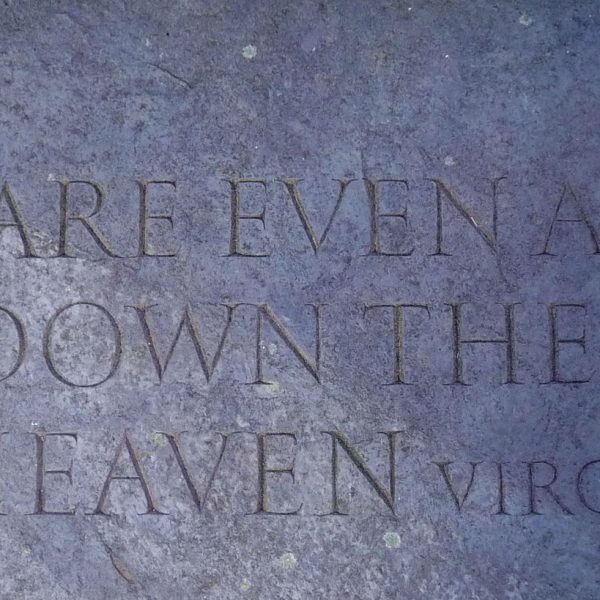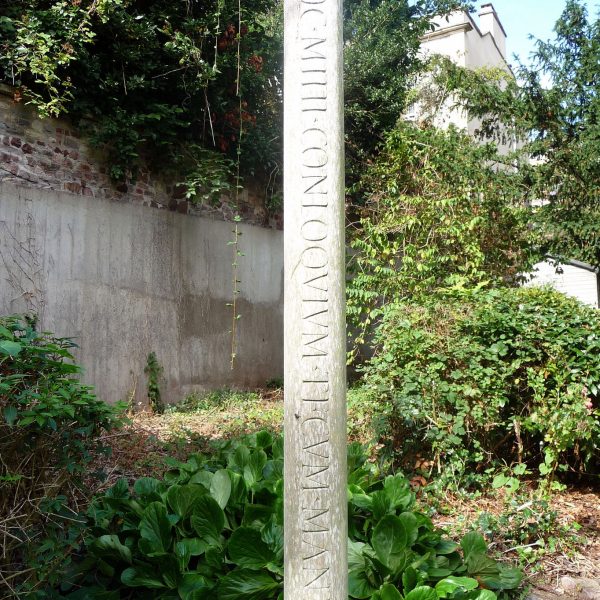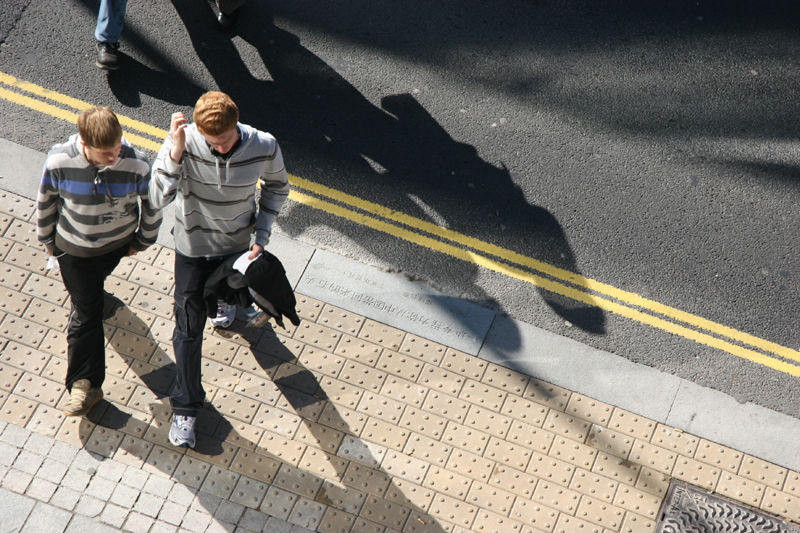
Synopsis
Ian Hamilton Finlay (1925 –2006), was one of the most prominent post‐war British artists. Finlay was a poet and artist. His sculptures, stone works and neon signs combined language and landscape, and expanded the idea of how words can be used and distributed.
Description
Initially associated with concrete poetry, he was above all a publisher, founding Wild Hawthorn Press in 1961, which produced a great many publications, often very small in scale. The ephemeral nature of these poem cards, lithographs and booklets was intentional, and Finlay understood publishing as an ongoing process of exchange.
In 1999, with funds awarded by the Arts Council and Heritage Lottery Boards and by English Heritage, St George’s Music Trust underwent a multi-million pound refurbishment. A significant part of the re-development, was to reinterpret the churchyard in terms of the new function of the building, as a place for music. Ian Hamilton-Finlay was commissioned to fulfill this brief, and over the next three years he installed a variety of works in the grounds, including benches, plaques and posts made of Caithness stone, all inscribed with quotations from Virgil’s Eclogues, Janacek’s Letters to Kamila and Ovid’s Metamorphoses.
The building re-opened in October 1999 with a new look and a new name – St George’s Bristol and with six sculptures by Finlay which were installed permanently in 2002.
The inscriptions are as follows:
Twin bench: Carmina vel caelo possunt deducere lunam / Songs are even able to draw down the moon from heaven (Virgil, Eclogue VIII)
Twin bench: Carminibus Circe socios mutavit ulixi / Circe with songs transformed Odysseus’ men (Virgil, Eclogue VIII)
Bench pair (Memorial Garden): Like a heavy beautiful dream in which I am bewitched / I know that I’d be consumed in that heat which cannot catch fire (Janacek, letters)
Oval medallion: Girl Into Reed; Reed Into Air; Air To Music (Ovid, Metamorphoses)
Wall-plaque: On the path I’d plant oaks which would endure for centuries / And into their trunks I’d carve the words I shouted in the air (Janacek, letters)
Post: Hoc mihi conloquium tecum manebit / Then will you and I speak together in unison
St George’s Bristol
St George’s Bristol is one of the country’s leading concert halls. It boasts a superb acoustic and unique atmosphere which attracts the world’s best artists.
A full and vibrant programme, with over 250 events each year, makes it an incredibly popular and important venue for all kinds of music.
St George’s is also a charity (registration number 295178) dedicated to promoting high quality music to diverse audiences by offering the best classical, jazz, blues, folk and world music as well as family concerts and talks.
Ian Hamilton Finlay
A philosopher, sculptor and poet, Ian Hamilton Finlay (1925-2006) reinvigorated the classical tradition in a body of work that encompasses a variety of creative forms to celebrate the sustaining power of words. His diverse production encompassed a variety of creative forms including prints, poems, books, inscriptions, neons, sculptures, permanent installations and landscape design. The purest kind of conceptual artist, Finlay was sensitive to the formalist concerns (colour, shape, scale, texture, composition) of literary and artistic modernism. For almost forty years, he formed his works using philosophical texts, myths, characters and images from the past to make enigmatic juxtapositions and in so doing new thoughts. Finlay’s adept use of syntax and narrative configuration weaved refined distinctions with a lyrical philosophy. His skill lay in his unique ability to break down complex ideas into coherent single words and short phrases, infused with Finlay’s characteristic wit and, often, wry humour.
For Finlay, the French Revolution represented not only a moment of enormous political rupture but one of aesthetic change, signalling a great moral as well as political leap that encompassed extraordinary advances in secular democracy and social progress. Revolution provided a rich subject; he first received international attention for his guillotine installation A View to the Temple at Documenta 8 in Kassel in 1987 and thereafter the guillotine became one of the most enduring elements of his iconography.
In 1961 he founded the Wild Hawthorn Press with Jessie McGuffie and within a few years had established himself internationally as Britain’s foremost concrete poet. His publications continue to play an important role in the dissemination of his work as a visual artist. As a sculptor, he worked collaboratively in a wide range of materials, having his concepts executed as stone-carvings, as constructed objects and neon lighting. From the mid-sixties Finlay lived and worked at Stonypath, south-west of Edinburgh, where he transformed the surrounding rural acres into a unique garden and life’s work: Little Sparta. Ian Hamilton Finlay died 27 March 2006, aged 80.
